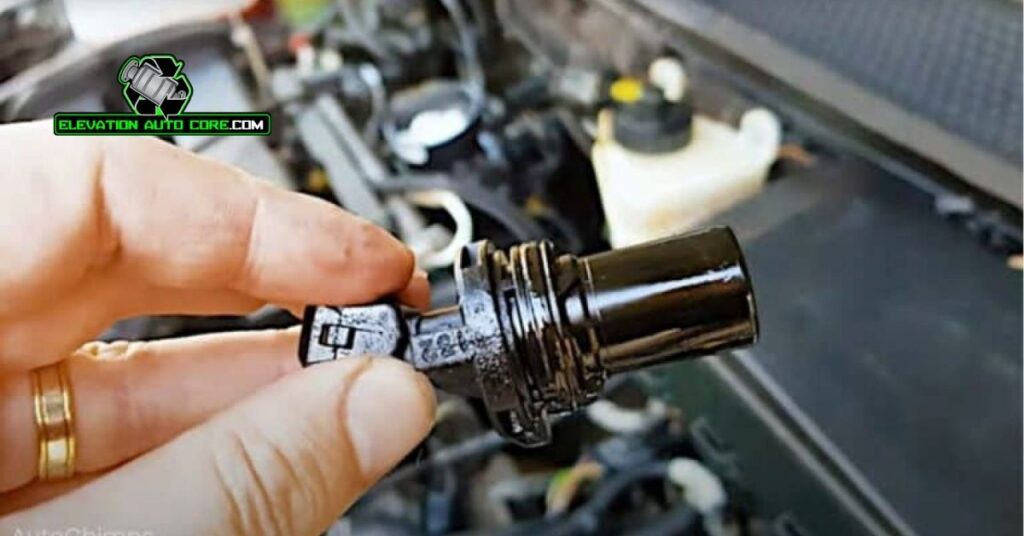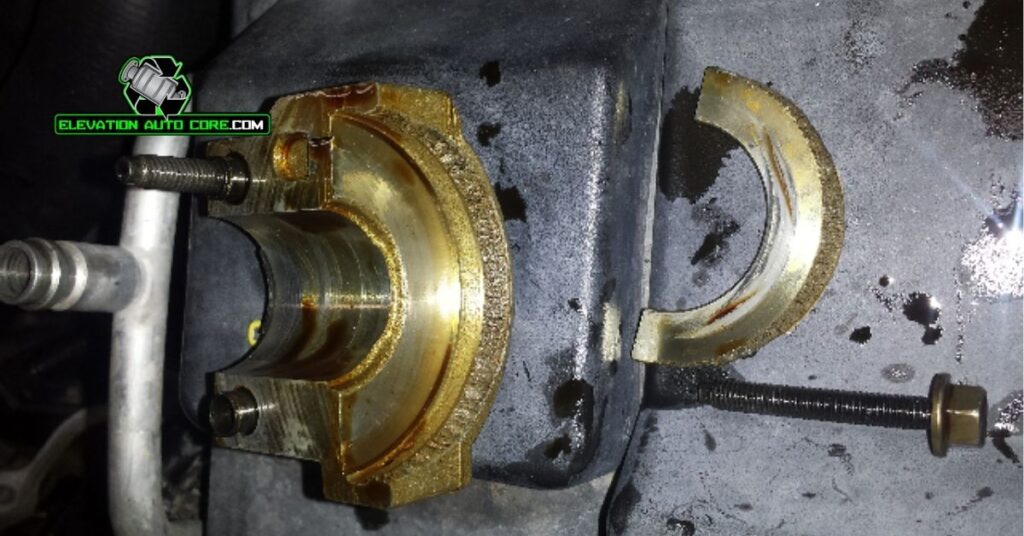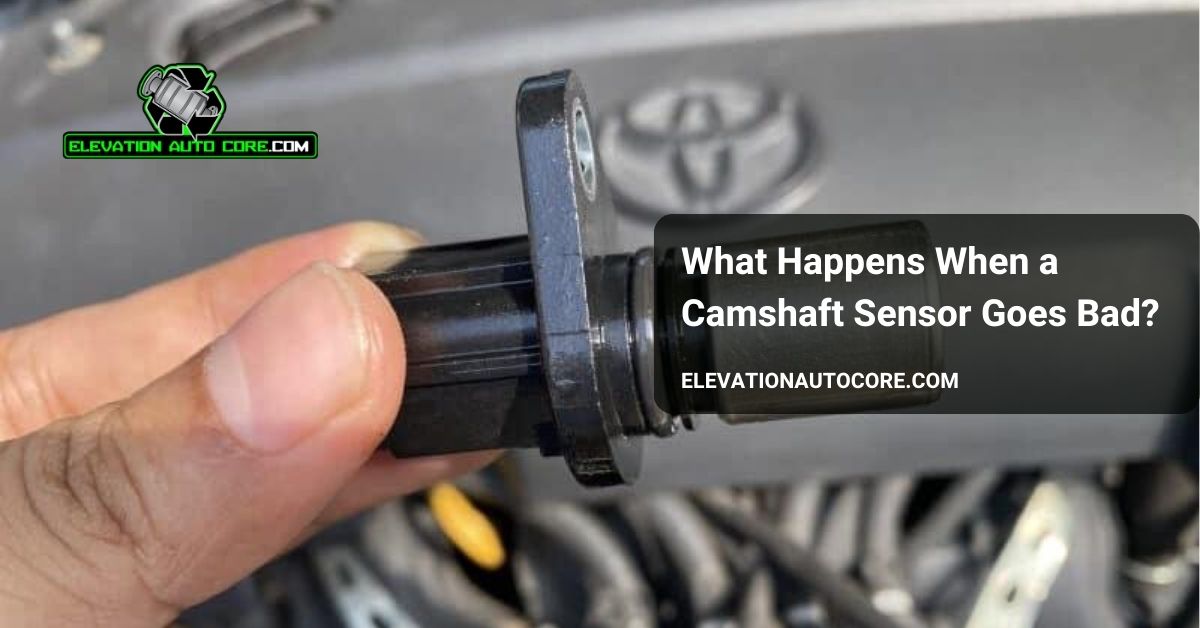What happens when a camshaft sensor goes bad? This small yet crucial component plays a vital role in your engine’s performance, and when it fails, the signs can be hard to ignore. From rough idling to sudden stalling, understanding these symptoms can save you from costly repairs down the road. Keep reading to learn how a faulty camshaft sensor impacts your vehicle and what you can do about it.
What Is A Camshaft Sensor?

A camshaft sensor monitors the position and speed of the camshaft in your engine. It sends this data to the engine control unit (ECU), enabling precise control of fuel injection and ignition timing. Accurate data from the sensor ensures optimal engine performance.
You can think of the camshaft sensor as an integral part of the engine management system. It helps coordinate the engine’s internal components, ensuring valves and pistons work in harmony. When the sensor functions properly, it minimizes emissions and maximizes fuel efficiency.
Modern vehicles often use magnetic or Hall-effect camshaft sensors. These types detect the camshaft’s position through changes in magnetic fields. The sensor then translates this information into electrical signals sent to the ECU for real-time adjustments.
Symptoms Of A Failing Camshaft Sensor
A bad camshaft sensor disrupts engine performance and triggers noticeable issues. Spotting these symptoms early can prevent costly repairs.
Engine Misfires Or Stalling
Frequent engine misfires often indicate a failing camshaft sensor. The sensor’s incorrect data transmission causes improper fuel injection, leading to incomplete combustion. Stalling is another common symptom when the ECU struggles to synchronize engine operations due to faulty sensor readings.
Poor Fuel Efficiency
Decreasing fuel efficiency becomes noticeable as a failing sensor sends inaccurate signals to the ECU. This disrupts the air-fuel mixture, causing the engine to burn excess fuel. Regular refueling more often than usual may point to this issue.
Trouble Starting The Engine
Starting the engine becomes challenging when the sensor malfunctions. The incorrect positioning information it provides interferes with the ignition timing. Persistent trouble turning over the engine signals the need for a sensor inspection.
Check Engine Light Illuminates
An illuminated check engine light frequently accompanies a failing camshaft sensor. Diagnostic trouble codes related to the sensor are stored in the ECU, requiring a scanner for confirmation. Ignoring this warning risks further engine damage.
Causes Of Camshaft Sensor Failure

A failing camshaft sensor disrupts engine performance, often leading to costly repairs. Understanding the causes helps you prevent issues and maintain efficiency.
Wear And Tear
Long-term usage degrades internal components, causing the sensor to lose accuracy. Repeated exposure to high temperatures within the engine bay accelerates material fatigue. Sensors in older vehicles are especially prone to failure as their parts deteriorate over time.
Electrical Issues
A faulty wiring harness or damaged connectors interrupts signal transmission to the ECU. Shorts, power surges, or corrosion on electrical contacts often affect sensor reliability. Broken internal circuitry within the sensor itself can also prevent it from functioning correctly.
Contamination Or Dirt Build-Up
Oil leaks often seep into the sensor housing, interfering with its readings. Dust, debris, or engine grime covering the magnetic or Hall-effect sensor surfaces reduces its ability to detect camshaft movement. Prolonged exposure to contaminants eventually causes complete sensor failure.
Consequences Of A Bad Camshaft Sensor
A faulty camshaft sensor disrupts critical engine functions, leading to noticeable performance and mechanical problems. Ignoring these consequences could escalate issues, resulting in extensive repairs.
Impact On Engine Performance
Engine performance suffers significantly when the camshaft sensor malfunctions. Inconsistent signal transmission causes incorrect ignition timing and fuel mixture adjustment. Power reduction becomes evident, especially during acceleration. Frequent stalling or rough idling can also occur without proper synchronization. In severe scenarios, your engine may fail to start entirely, leaving the vehicle inoperable. Prolonged issues lead to inefficient combustion, increasing emissions and fuel consumption.
Potential Engine Damage
Continued operation with a failing sensor risks internal engine damage. Incorrect valve timing stresses vital components like the pistons and crankshaft. Over time, repeated misfires or detonation can degrade the catalytic converter, an expensive and essential part of the exhaust system. Risk of overheating rises due to disrupted air-fuel ratios, harming sensitive parts such as cylinder walls or head gaskets. This type of wear accelerates failure of surrounding systems, leading to further breakdowns.
Increased Repair Costs
Fixing problems arising from prolonged camshaft sensor issues can be costly. Repairs may extend beyond replacing the sensor to replacing damaged components like the catalytic converter, timing belt, or valves. Frequent misfires could lead to engine rebuilds or head replacements, escalating costs further. Diagnostic fees and repeated maintenance visits also increase overall expenses. Addressing sensor failure early prevents compounding repairs and safeguards engine longevity.
How To Diagnose A Faulty Camshaft Sensor

Diagnosing a faulty camshaft sensor involves exact tools and methods to confirm the issue. By systematically analyzing the problem, you can pinpoint the sensor’s failure and take corrective action.
Using A Scan Tool
Start by connecting a diagnostic scan tool to your vehicle’s onboard diagnostics (OBD-II) port. This tool reads error codes stored in the engine control unit, which often indicate sensor-related issues. Look for fault codes such as P0340 or P0341; these are common for camshaft sensor malfunctions.
Review live data from the scan tool to monitor camshaft position readings. If the data stream appears erratic, inconsistent, or absent, it likely signals a malfunctioning sensor. Compare sensor readings with manufacturer specifications outlined in your vehicle’s repair manual for accuracy.
Visual Inspection
Inspect the camshaft sensor for visible damage or contamination. Cracks, broken components, or oil and debris build-up on the sensor can impede proper function. Ensure the sensor’s housing is clean and intact. Any irregularities require immediate attention.
Examine the wiring, connectors, and harnesses attached to the camshaft sensor. Damaged wires, loose connections, or corroded terminals affect signal transmission. Gently tug wires to confirm they are secure and inspect for fraying or exposed metal. Replace damaged components to restore proper function.
How To Fix Or Replace A Camshaft Sensor
Addressing a faulty camshaft sensor promptly is crucial for maintaining engine performance and preventing further damage. When deciding between repair and replacement, consider the condition of the sensor and related components.
Repair Vs. Replacement
Inspect the camshaft sensor to determine if repair is possible. Minor issues, such as loose or dirty connections, can often be fixed by cleaning or securing the wiring and connectors. If contamination from oil or debris is affecting the sensor’s readings, thoroughly cleaning the sensor surface may restore functionality.
Choose replacement if the sensor’s internal components are damaged or worn. Long-term use, exposure to high temperatures, or severe electrical issues typically render the sensor irreparable. Replacing the sensor ensures reliable performance and accurate data transmission to the ECU.
Steps To Replace A Camshaft Sensor
Locate the camshaft sensor in your vehicle. Refer to the service manual, as the sensor is often positioned near the engine cylinder head, timing cover, or camshaft itself.
Disconnect the battery to prevent electrical hazards. Remove the negative terminal before proceeding to ensure safety during the replacement process.
Unplug the sensor’s electrical connector. Check for damaged or corroded pins, as they may need replacing along with the sensor.
Remove the faulty sensor. Use the appropriate tools, such as a socket or wrench, and preserve related hardware for reinstallation.
Install the new sensor correctly. Align it as specified in the manual, securing it with the bolts or fasteners you removed earlier.
Reconnect the sensor’s electrical connector firmly. Ensure it’s snug to prevent signal interruptions.
Reattach the battery and test the engine. Start your vehicle and monitor for error codes or symptoms to confirm the new sensor is functioning.
Preventing Camshaft Sensor Problems

Proactive measures can help maintain your camshaft sensor’s performance and ensure engine efficiency. Routine care minimizes risks and avoids costly repairs.
Regular Vehicle Maintenance
Servicing your vehicle on schedule safeguards engine components, including the camshaft sensor. Clean engine oil prevents contamination that interferes with sensor readings, so follow your manufacturer’s recommended oil change intervals. Replace air and oil filters as required to reduce dirt buildup near the sensor. Inspect electrical systems regularly to catch issues like frayed wiring or loose connections that impact signal transmission. Use diagnostics during check-ups to monitor real-time camshaft data and detect abnormalities early.
Addressing Issues Promptly
Fix minor problems immediately to prevent complex failures in the future. Pay attention to warning signs such as engine misfires or stalling, and scan for error codes like P0340 or P0341. Clean or replace a contaminated sensor to restore accuracy before it degrades further. Repair damaged wiring or connectors that disrupt signal flow; ignoring these can lead to broader engine issues. If the sensor shows wear-related failure, replace it quickly to maintain proper ignition timing and fuel efficiency.
Conclusion
A failing camshaft sensor can have serious consequences for your vehicle’s performance and reliability. Ignoring the warning signs not only puts your engine at risk but also leads to costly repairs down the line. Staying proactive with regular maintenance and addressing issues early ensures your engine runs efficiently and avoids unnecessary stress on critical components.
By keeping an eye on potential symptoms and taking swift action when needed, you can protect your vehicle’s longevity and maintain optimal performance. A well-functioning camshaft sensor is key to a smooth and efficient driving experience.

